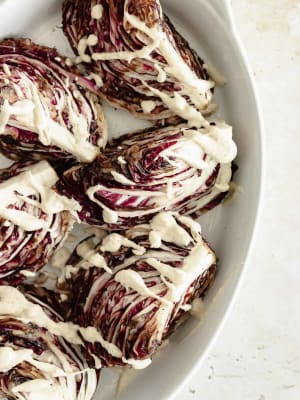Garlic: Medicine or Food?

Garlic: Medicine or Food?
For most of garlic's incredible history, has been thought of as medicine, not food.
The earliest histories of garlic mention its curative properties. Perhaps the sheer pungency of garlic’s volatile aromatics has always been enough to announce its extraordinary place in the world of edible plants. This is no ordinary vegetable.
The single most curious and magical thing about the story of garlic in human history might be that different cultures, independently and thousands of miles away from one another came to many of the same conclusions about garlic.
They came to the same class, religions and medicinal conclusions. To a large extent, the copious volumes of western science that have emerged in the past 75 years singing the praises of this miraculous superfood are just filling in the details of what was well-known by the ancients: garlic can be used as a general tonic to preserve health and promote longevity, or it can be used as a medicine for the specific clinical treatment of numerous acute and chronic health conditions.

A Brief History of Medical Garlic
Garlic, or Allium sativum, has been used by our ancestors since the last Ice Age. Garlic had a working-class association throughout early history as a fatigue fighter for sailors, soldiers, and builders. It was believed to increase strength and productivity and even ward off heat stroke.
The ruling classes, across cultures and timelines, ate much less garlic comparatively. The ultra-intense flavour and aroma of garlic have been something of an acquired taste. The trademark musk carried a troubling peasant connotation and was avoided by society's noble ranks.
Across the globe, disparate cultures found their ways to arrive at the same medicinal properties of garlic, not just in general but for specific clinical applications, like rebalancing cardiovascular and circulatory health, restoring respiratory function, and eradicating parasites.
Traditional Chinese Medicine probably has the most experience with medicinal applications of garlic, predating Greek, Roman, or Egyptian practices. In that context, it is considered a heating element that tonifies yang, resolves dampness, expels wind and assists the circulation of qi. It was used to heal the lungs and aid digestion. Garlic was also used to expel worms, an aspect of the still-famous anti-infectious capabilities that would constitute a significant theme in garlic's medical history.
Indian medicine emerged around the same time, and its earliest records also mention garlic for digestion, infections, and fatigue. There were some Indian religious prohibitions on garlic, and it was not generally the province of the upper caste Brahmin elite. Still, it was used routinely as a folk remedy by everyday people.
The working-class association with garlic lasted for centuries. It seems the ruling classes generally ate much less of it, including religious authorities who banned it from temples in India, Greece, and throughout Asia. The spiritual principles by which garlic was discouraged or outright prohibited permeated daily life, the result being that it long avoided becoming a culinary staple in much of the world. Despite not commonly appearing on the dinner plate, the medical value was undeniable enough that garlic would remain close at hand for infections, indigestion, or other health conditions.
After China and India, the Ancient Greeks developed a medicinal garlic tradition of their own. Among them was Hippocrates, the godfather of Western medicine, who frequently prescribed garlic for pulmonary issues and uterine growths. Avicenna, the towering figure of Persian medicine, was soon to follow and immortalized clinical garlic use in his encyclopedic Canon of Medicine, completed in 1025. Hippocrates and Avicenna built on the foundations of their forebears and ushered garlic into the dawning new era of modern medical science.
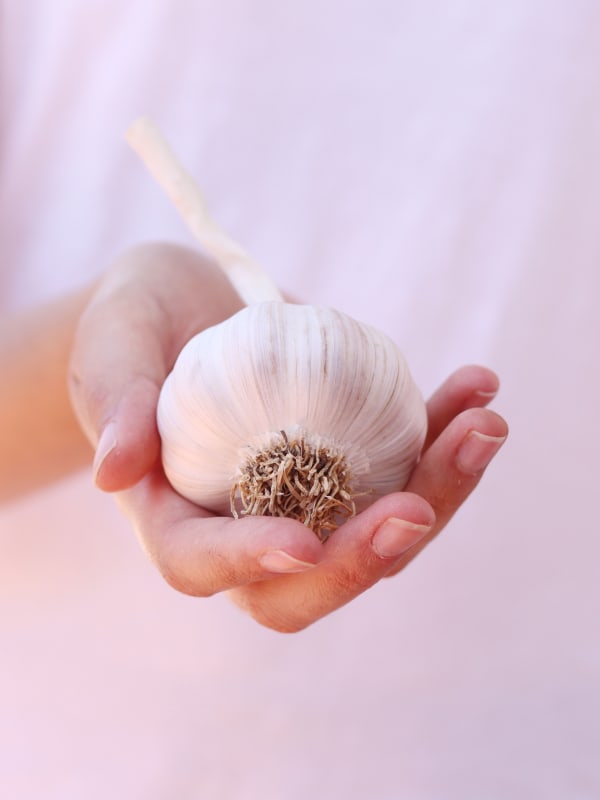
Religious Prohibition
Inheriting from the Greeks, Romans brought garlic up to Europe, and by the Middle Ages, Christian monks were growing it and spreading information about its clinical applications. The Abrahamic religions all effectively contributed to a garlic renaissance. It is one of the only vegetables explicitly mentioned in the Bible, the Quran, the Torah and the Talmud.
For spiritual reasons, many Hindus, Jains, and members of other faith traditions still abstain from eating garlic and its smelly sulphurous cousin, the onion. Yogic wisdom cautions against both tamasic and rajasic foods unfit to offer Krishna and therefore unfit to consume if pursuing purification.
Bulb of Life
Garlic’s list of health benefits is astonishing. It is hard to imagine a more functional or impressive superfood; not only does garlic offer lots of detoxifying sulphur (the odiferous jewel of the allium family), prebiotics, vitamins and minerals, but it has a powerful effect on our circulation, immunity, and longevity.
This amazing allium is:
- Antihypertensive (reduces blood pressure)
- Antiaggregant (decreases platelet aggregation)
- Cholesterol-balancing
- Cardioprotective
- Immunostimulating
- Antioxidant
- Anti-inflammatory
- Anti-carcinogenic
Garlic achieves all of these fantastic effects because it contains 100+ compounds from quercetin, N-acetylcysteine, the almighty allicin, and more. We are still parsing out what these molecules do in the body and how they synergize with one another to give garlic its medical superpowers.
Allicin is the most famously bioactive and well-studied single molecular component of garlic and is commonly supplemented as an extract on its own. The goal of using isolated allicin is to increase the potency of all garlic’s main benefits. For people who don’t appreciate its taste (or the breath that follows), a capsule may be an appealing way to assume the same benefits. However, some research suggests that allicin as a soloist is less chemically effective alone than when left cooperatively bundled with the rest of the orchestra as nature intended.
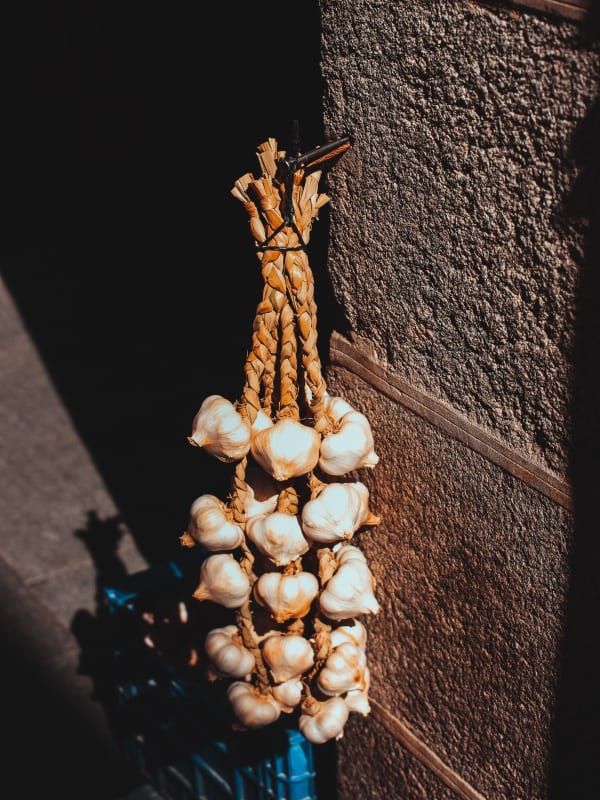
Nature's Antibiotic
From a nutrition perspective, the amazing health-giving chemistry set that is a single clove of garlic has much in common with its other allium cousins like leeks, onions, and chives. It even distinguishes itself as the most heart and blood-friendly of the bunch.
But when it comes to ridding our bodies of unwanted visitors like overgrown bacteria, yeast, parasites, and worms, no other allium comes remotely close. No other food comes close! For killing off skin or gut infections, garlic is simply hands-down the ultimate.
Not many foods can claim to be antiviral, antibacterial, antifungal, anti-yeast, anti-protozoa, and antihelminthic (anti-worm).
The good news is that while nasty bugs seem to have a hard time surviving it, garlic tends to leave our beneficial probiotic strains like lactobacillus acidophilus alone. Modern antibiotics can't make the same claim. Garlic or isolated allicin extracts may be a valuable solution for the antibiotic resistance we see as a result of overuse.
In contemporary holistic nutrition, garlic is experiencing yet another renaissance as the world of functional lab testing has once again reminded us of its powerful dysbiosis-busting abilities. Supplement manufacturers are responding to the renewed interest, racing to improve isolation and extraction techniques for stabilizing allicin to maximize the therapeutic effect.
Before refrigeration or antibiotics, garlic's antimicrobial qualities were of particular importance. But after penicillin and long after Hippocrates, it would seem that our generation has rediscovered those same unrivalled qualities all over again.
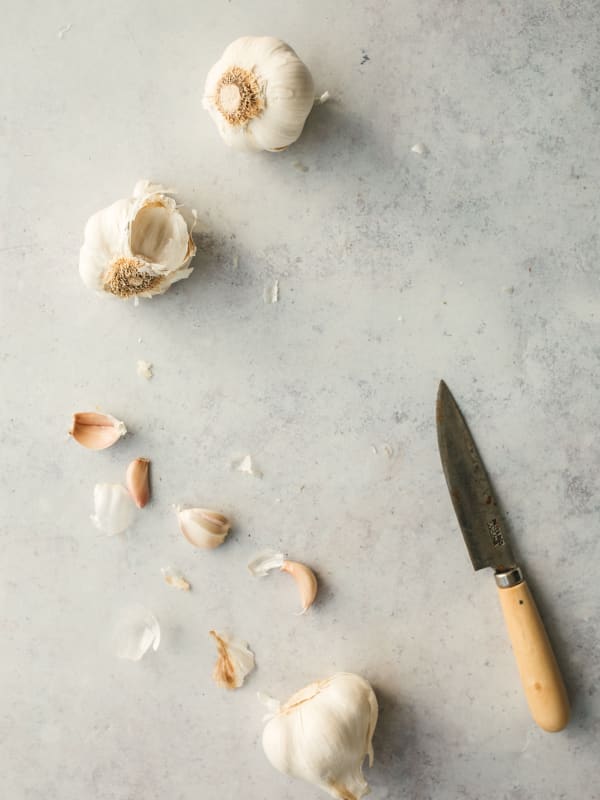
Garlic as Food
Nowadays, garlic is used more for taste than anything else, but this is a historical anomaly: even Italian cuisine only began to feature garlic in the 20th century heavily.
There are two main families of garlic. The most abundant, and most of what we are likely to find in supermarkets, is cultivated Softneck garlic, which is easy to grow and harvest mechanically for mass production. Softnecks prefer warmer climates, and China is the world's top supplier.
Hardneck garlic is, by comparison, radically uncultured and essentially wild. It is characterized by a rigid central stalk encircled by a single row of cloves and thrives in colder climates. Significantly, Hardneck garlic cannot easily be planted mechanically and is not suited for large-scale production. The myriad species of Hardneck garlic do, however, boast an astonishing array of bold and subtle tasting notes, and it is categorically considered the best culinary garlic.
Garlic connoisseurs will be happy to show you a near-endless rainbow of different Hardneck bulbs. Spicy, smokey, peppery, and herbaceous, in plush purples, blushing pinks and deep reds, there are over 1100 different subvarieties. Whole garlic festivals have become a worldwide pastime, celebrating a rich diversity of different aromatics and flavour profiles.
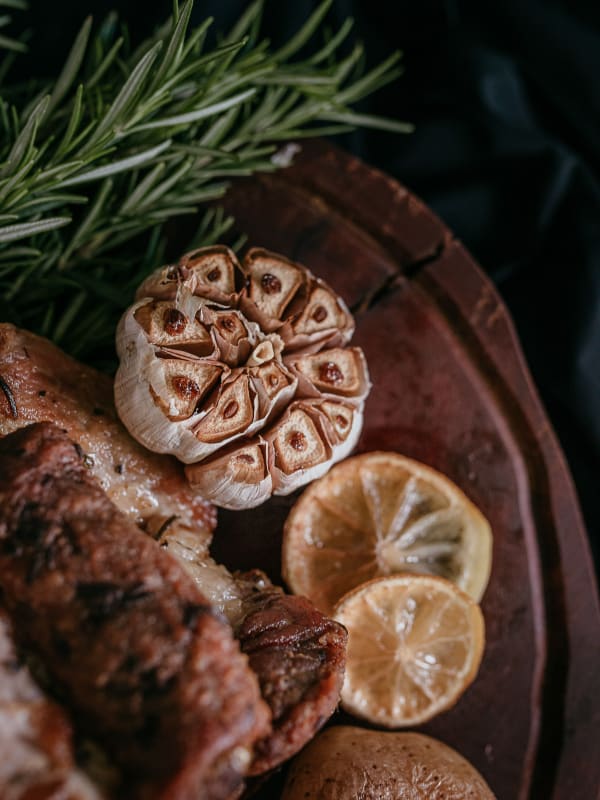
Best Practices
Crushing garlic against a cutting board with one's palm on the flat side of the knife is well known to get the juices flowing, but it also causes a chemical explosion by releasing an enzyme called alliinase. In seconds this enzyme converts alliin, a relatively inactive garlic compound, into the mighty allicin. It doesn't stop there; the alliinase cascade leads to continued chemical conversions, producing an explosive proliferation of different organosulfur compounds. Crushing garlic essentially opens up the full bouquet of its therapeutic offerings.
Cooking it, while quickly destroying allicin, vitamins, and enzymes does tend to make it easier to digest for those who struggle with digestion. For those who struggle with the sheer flavour intensity of raw garlic, cooking it will help with that too!
Lead image by ji jiali on Unsplash.







